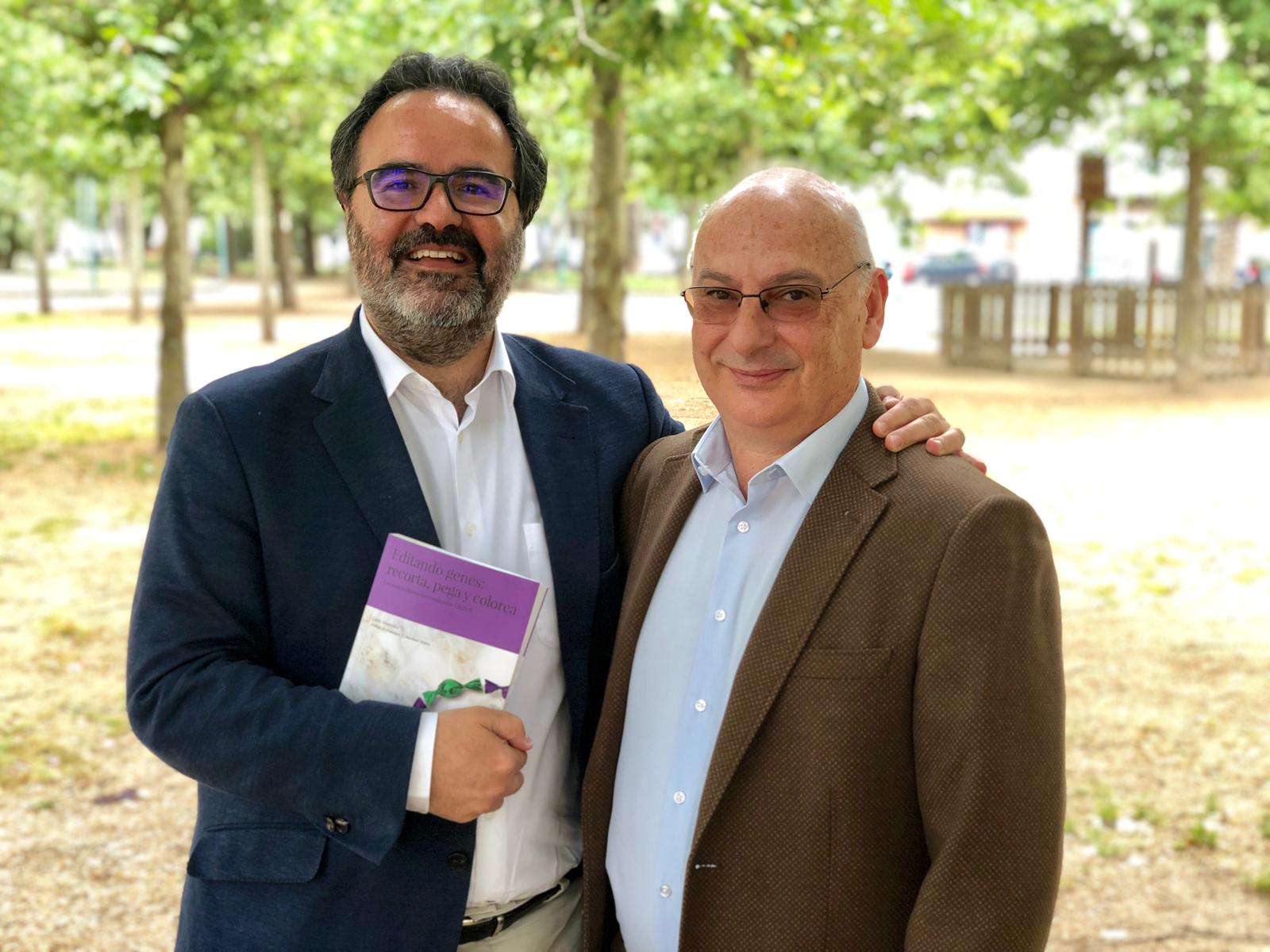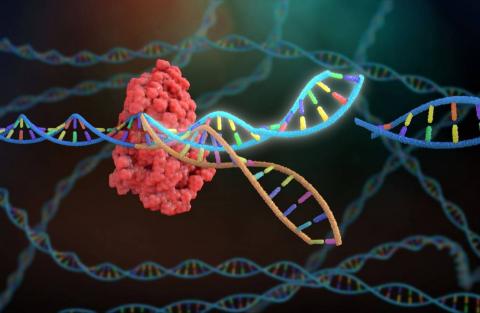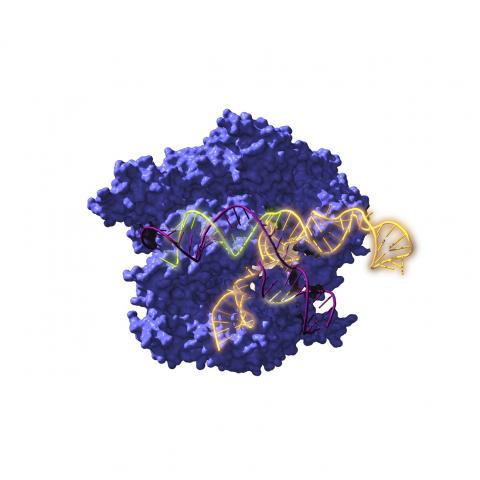During the summer of 2003, an unexpected heat wave swept across Europe, taking the lives of thousands of citizens. In Spain, the city of Alicante wasn’t spared by the heat. But those high temperatures did not seem to affect the work of a university researcher—a microbiologist who had been trying, for ten years, to understand a curious pattern of DNA sequences he had found in 1993 in the genome of a microorganism inhabiting the Santa Pola salt marshes, an archaeon called Haloferax mediterranei. He was not the first researcher to report such patterns; Japanese scientists had already described them in 1987 in the genome of the most famous of all bacteria: Escherichia coli. But they did not pursue it further. On the contrary, the microbiologist from Alicante was fascinated by these sequence patterns and continued to study them. He was so interested in them that, at the end of 2001, he even decided to give them a name: CRISPR, an acronym for "Clustered Regularly Spaced Short Palindromic Repeats", which faithfully described these sequences.
That scientist was Francisco Juan Martínez Mojica, known to all his friends and colleagues as Francis Mojica. In 2003, he had already spent ten years trying to understand why many bacteria persisted in interspersing sequences of unknown DNA flanked by others that were always the same: repeated sequences whose function remained a mystery.
In 2003, Francis found nothing less than a bacterial defence system: it learnt by adding fragments of new viruses, to which the bacteria became resistant.
During that torrid summer of 2003, Francis had his eureka moment; he realised something that no one else in the world had until then. By analysing CRISPR sequences in the genomes of many bacteria, he understood that some of these unknown DNA fragments were actually pieces of the genomes of viruses that infect bacteria, called bacteriophages. He added another surprising observation: when a bacterium carried the genome fragment of a particular virus in its CRISPR cluster, that bacterium was resistant to infection by that same virus. In a nutshell, Francis had found nothing less than the bacteria's own defence system: a genetically based, adaptive immune system that learnt by adding fragments of new viruses, to which those bacteria became resistant.
Francis was not able to publish these findings until 2005, after unsuccessfully battling with major journals that did not believe him and dismissed his observation, failing to understand its relevance. Finally, the work was published in the Journal of Molecular Evolution, a worthy but modest journal. Good research papers, those that contribute new knowledge, always end up being published, regardless of the publishing venue.
Two researchers ended up independently reading Francis’s article: Emmanuelle Charpentier, a French microbiologist, and Jennifer Doudna, an American biochemist, who joined forces to investigate bacterial CRISPR systems. A conference on the subject brought them together for the first time in San Juan, Puerto Rico, in March 2011. They exchanged ideas and decided to work together to try to describe one such CRISPR system in a particular bacterium: Streptococcus pyogenes. Just fifteen months later, in June 2012, they published the result of this scientific collaboration in the journal Science, detailing the components of the bacterium's CRISPR system: a protein nuclease, called Cas9, which cuts double-stranded DNA, and a small RNA molecule, complementary to a particular gene, which serves as a guide and tells the nuclease where to cut in the genome. A simple, but tremendously versatile and effective system. They closed their article by suggesting that these bacterial CRISPR systems could be used as tools to edit genes in any organism.
Researchers Charpentier and Doudna joined forces to describe CRISPR systems, and proposed using them to edit genes in any organism. This revolutionary idea earned them the Nobel Prize in Chemistry
This masterful idea sparked the imagination of researchers and sparked experiments in laboratories all over the world. For that revolutionary idea, which turned biology upside down, Charpentier and Doudna deservedly received the Nobel Prize in Chemistry in 2020. However, while they did come up with the idea that earned them the award, they did not actually prove that it was possible to use CRISPR tools to edit genes. The world had to wait until January 2013, when two independent laboratories, led by researchers Feng Zhang and George Church, respectively, published papers—also in the journal Science—showing that CRISPR tools could be used to edit genes in human cells. And the rest is history.
The last ten years have seen an avalanche of methodological advances, applications and improvements, leading to increasingly refined and safe versions of these gene editing tools. We’ve now seen animals and plants with edited genomes, with biotechnological characteristics that can be used in livestock and agriculture. And we’ve already seen the first patients who have been able to benefit from CRISPR to overcome diseases that so far had been incurable, among many other applications that have dotted the recent scientific literature. All of these developments have occurred in ten short years, since the publication of Zhang and Church's articles. And let’s not forget Mojica’s first significant observation twenty years ago, which catapulted research into CRISPR systems. Thirty years ago, Francis himself had first come across these sequences during his doctoral thesis. In a summary of these thirty years of CRISPR research published in the journal Science, Jennifer Doudna acknowledges Mojica's work, which triggered the CRISPR revolution that followed, at the top of her review.
In 2013 it was confirmed that CRISPRs were capable of promoting gene editing in all living things, but they were not without problems. David Liu proposed a solution to the risks with base editors
During the year 2013, a string of publications confirmed that CRISPRs were capable of promoting gene editing in all living beings where they were tested: plants, animals, fungi, other bacteria, etc. But it was also the year in which we discovered that CRISPR tools were not without problems. Firstly, the RNA molecule could stick to non-identical but similar sequences in the genome, causing the Cas9 protein to cut genes other than those intended, with unpredictable consequences. Secondly, the cellular repair systems that came to play after Cas9 cut the DNA generated multiple repairs in the genome, and not all of them matched the sequence planned by the researchers. This uncertainty was manageable in academic labs, selecting what we were interested in and discarding everything else, but unfeasible in any clinical application of CRISPR tools to treat disease.
In 2016, researcher David Liu proposed a solution to the risks and problems of first-generation CRISPR tools: a new version of them called base editors. These new tools used a modified Cas9 protein, which cut only one of the two strands of DNA, and carried another attached protein, a deaminase, capable of chemically converting a C base into a T. Shortly afterwards, Liu described other base editors capable of converting an A into a G, and a C into a G. Successive versions of these increasingly optimised base editors have made it possible to bring them to the clinic in just a few years. In 2022, the first patients have already been able to benefit from them. This includes Alyssa, a British girl with leukaemia who, thanks to these base editors, managed to overcome an aggressive disease previously considered incurable.
In the last ten years, we have seen other prodigious applications of CRISPRs, such as those that make it possible to inactivate disease-causing genes (not just to correct abnormal gene sequences); to diagnose the presence of viruses, or even to use CRISPRs to attack viral genomes, and generally to develop research projects that used to be unthinkable. This includes, for example, the analysis of the non-coding part of the genome, which had not yet yielded to traditional genetic engineering techniques, or to endow animals and plants with unique, beneficial characteristics.
In ten years we have witnessed prodigious applications of CRISPR, such as the recovery of a girl with incurable leukaemia; but also grandiose misuses, such as He Jiankui's attempt to createme a new strain of HIV-resistant humans
But we have also seen CRISPRs severely misused by some reckless researchers, such as He Jiankui, convinced that he could produce a new breed of human beings resistant to HIV and therefore incapable of developing AIDS. This ill-fated experiment, which we learned about in November 2018, resulted in the birth of three girls with their genomes altered. The babies had become recipients of all the known uncertainties of CRISPR systems, and the Chinese researcher was imprisoned, heavily fined and banned from working with human embryos. However, he was released from prison in April 2022 and has already set up a new laboratory in Beijing, where he now aims to find a cure for Duchenne muscular dystrophy—a fatal congenital disease for which there is no known effective treatment.
CRISPR tools are here to stay. We will hear about them more and more in the future. New CRISPRs have been described from bacteria living in extreme and remote places on this planet. We have even been able to reconstruct CRISPRs from bacteria that must have existed billions of years ago. There are already more than 70 clinical trials underway around the world investigating their potential use in treating different types of cancer and congenital diseases, including some rare ones. Many CRISPR-edited plant varieties are also associated with higher yield rates, better adapted to the environment or with unique traits. Many countries in the world, except in the European Union and New Zealand, have decided to bet on these crops. Here in Europe, the birthplace of CRISPR, we may only be able to buy the plants that will be produced in other countries.
There are already more than 70 clinical trials underway around the world investigating CRISPR’s potential use to treat different types of cancer and congenital diseases, including some rare ones
In short, it is amazing to see how far we have come in ten years—not to mention the previous twenty years in which the basic knowledge of CRISPR systems in bacteria was established. Remember that we have benefited from the work of bacteria in optimising these CRISPR systems over billions of years; it should come as no surprise how well these CRISPRs work for us when we take them out of their natural context. I'm convinced that they still have many tricks up their sleeves that will continue to amaze us.





